The Nuclear Project

Radiant World. chalk on blackboard, 2008
The Nuclear Project is an art project I took on while I was doing my MA Fine Art at Central Saint Martins College of Art and Design.
I’m from the area in Japan where a nuclear waste reprocessing plant was being built and its landscapes were rapidly changing. I felt compelled to face the nuclear issues through my art.
The blackboard drawing titled Radiant World expresses the world’s connection with the nuclear industry, its problems and impact on the world at various levels.
Despite the unsolved technical, social and environmental problems of the nuclear industry, political decisions are often driven by business conceit and militaristic greed. Nuclear power is rationalised by the industry as a panacea to the energy industry’s contribution to global warming, and by-products of nuclear power generation are used for producing weapons of mass destruction.
This work conveys a contradictory human existence within the conflict between nature, culture, technology, politics and economy. It intends to introduce questions about the structure on which our contemporary society lies, and to raise awareness about effects of the nuclear industry, encouraging the audience to engage with issues surrounding us.

Radiant World. chalk on blackboard, 2008

Uranium mining
To extract uranium ore (5%), radioactive surplus soil (95%) is left behind.

Tailing
To extract natural uranium from uranium ore, radioactive slag is left behind. Radioactive pollution remains in the neighbouring area.

Half-life of U238
U238 is radioactive for 45,000 million years.

Displacement
Local residents are often displaced due to uranium mining.
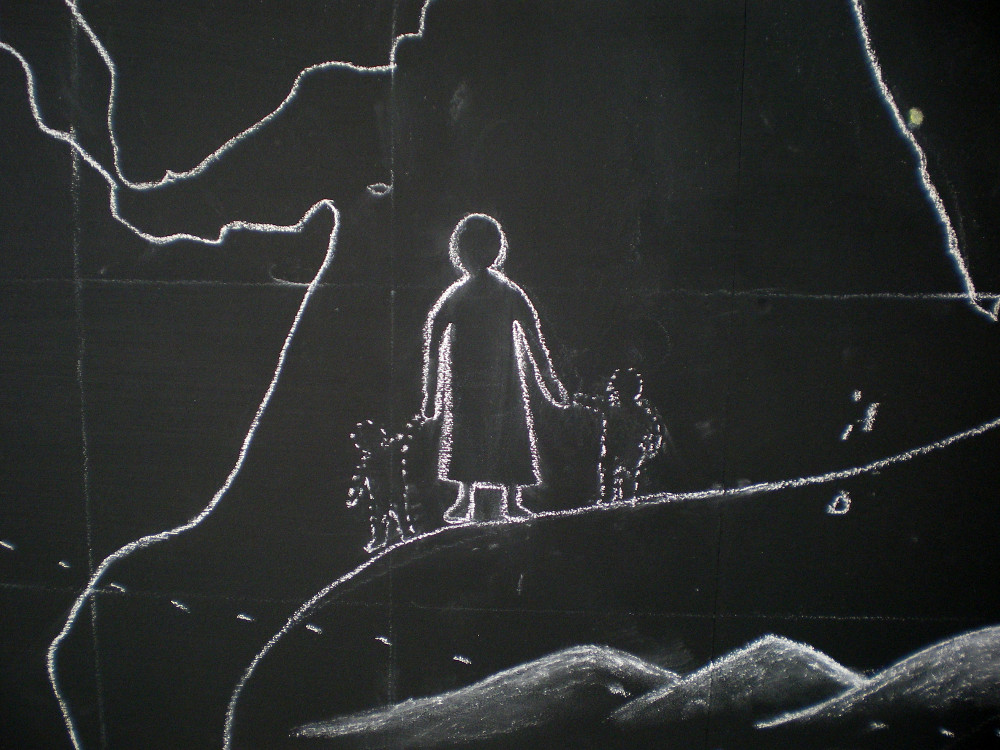
Impact on life
Mining sites often cause miscarriages, deformities, leukaemia in children.
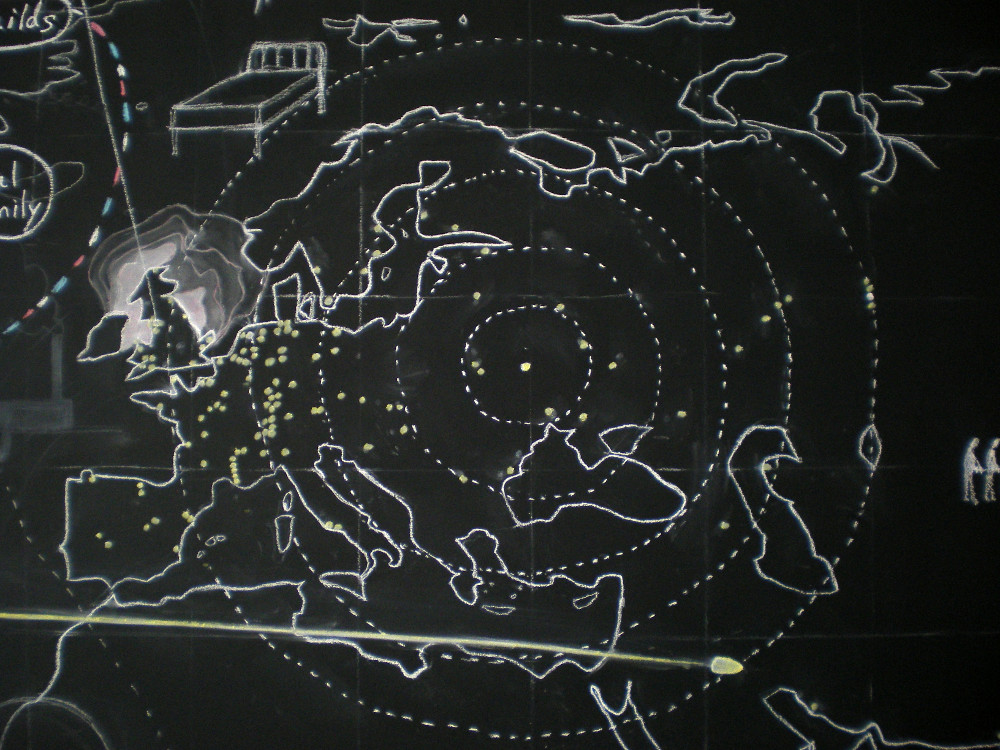
Chernobyl
The Chernobyl accident has faded away from people’s memories while people left behind still continue to be affected by the aftermath.
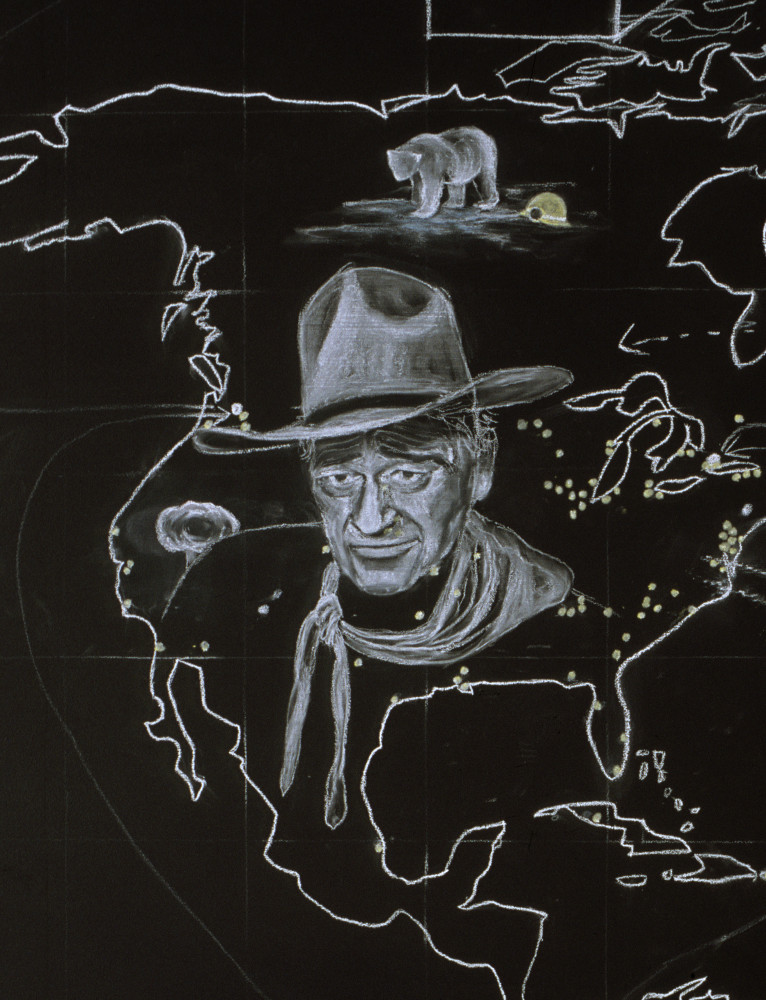
John Wayne
Hollywood actors filming westerns in Nevada, Arizona and Utah suffered an unusually high rate of cancers.

Bikini
The Bikini swimsuit was named after the Bikini Atoll, where the first public test of a nuclear bomb had taken place (atom split into half). The legacy of nuclear bomb testing has affected the Micronesian inhabitants around Bikini Atoll.
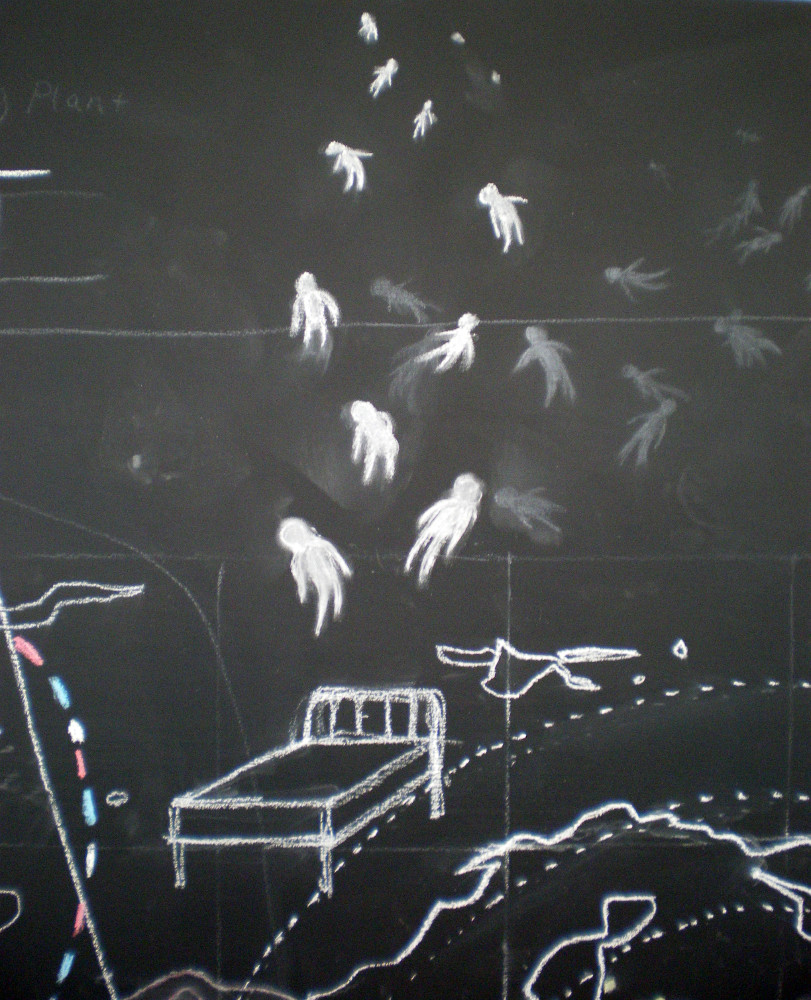
Departing Souls
Victims of the nuclear industry.
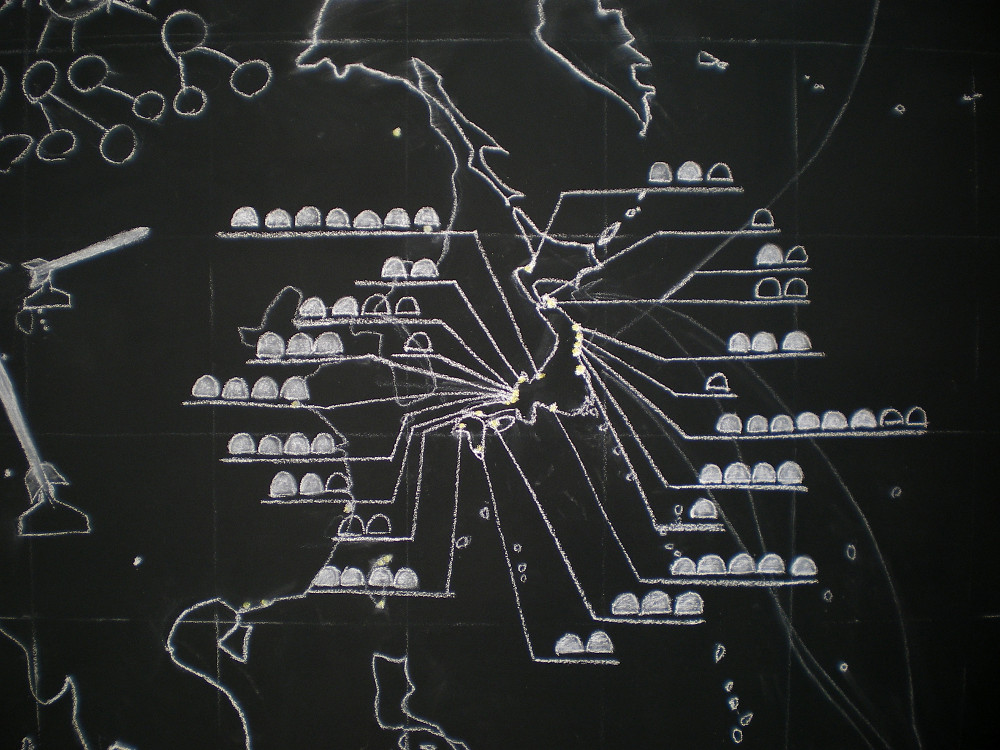
Japan
Japan, the only country on which nuclear bombs were dropped, now owns fifty-five nuclear reactors.

Nuclear business
Japan’s nuclear policy determined by the capitalist mentality is backed by the intimate relationships between the government, power companies and nuclear reactor manufacturing companies.
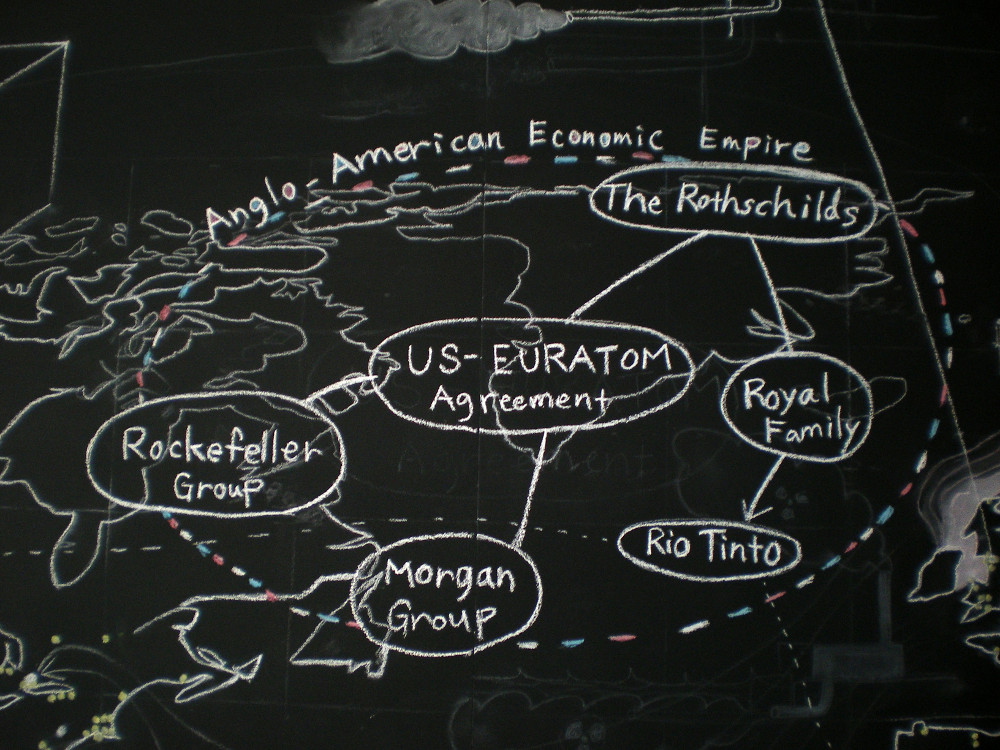
The nuclear syndicate
There is a hidden agenda and secret economic partnership that monopolise the nuclear industry.

Nuclear fuel reprocessing
Originally developed for producing nuclear weapons, reprocessing is used to recycle plutonium and uranium. However, more radioactive waste is created when nuclear waste is reprocessed.

Sellafield (Windscale)
The Europe's largest nuclear site has been polluting the Irish Sea with radioactive contamination.

Disposal of nuclear waste
When Somali Civil War that started in 1991 left the nation with no government or coast guard, European vessels started to dump toxic wastes including radioactive uranium.

Depleted uranium
Depleted uranium as a by-product of the production of enriched uranium is used to make munitions. American troops who served in Iraq now suffer from Gulf War syndrome caused by their own depleted uranium munitions.

Tibet
In China, 1/4 nuclear missiles are deployed in Tibet. Tibetan prisoners are forced to work for missile manufacturing factories. China also accepted to store radioactive waste from European nuclear reactors and dumped in Tibet highland.

Biological effect
Radioactive isotope accumulates in parts of the body and causes various health problems.
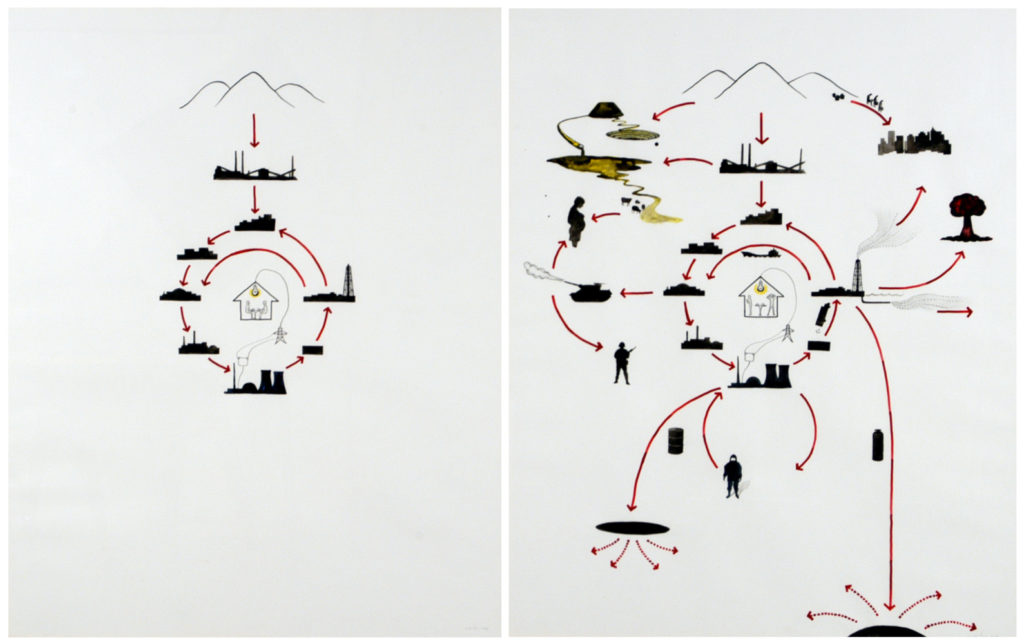
The Nuclear Fuel Cycle – Cause & Effect. Ink on paper, 2009
The diagram drawing titled The Nuclear Fuel Cycle – Cause & Effect – takes on the issue of monopolised information by the nuclear industry, power companies and the government. In Japan, official pamphlets and brochures about nuclear power often have a diagram of ‘the nuclear fuel cycle’: a picture of a clean circle showing how nuclear fuel flows in order to produce electricity and is recycled after use. The reality, however, is neither simple nor clean as shown in the diagram. The work The Nuclear Fuel Cycle – Cause & Effect – suggests the hidden sides of the nuclear fuel cycle which are not displayed on the official diagram. The purpose of this work is to draw audience attention to the problems of nuclear policy by showing how individual’s everyday life is connected to the larger-scaled issue, and also to change the way the audience looks at reality.
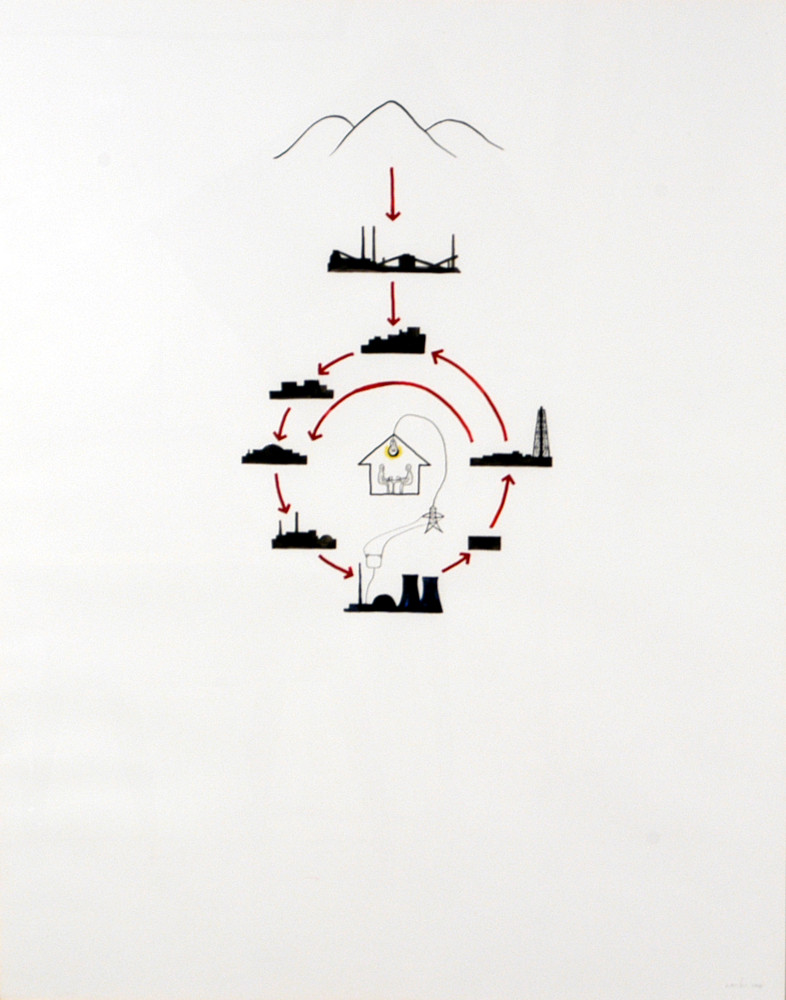
The Nuclear Fuel Cycle - Cause
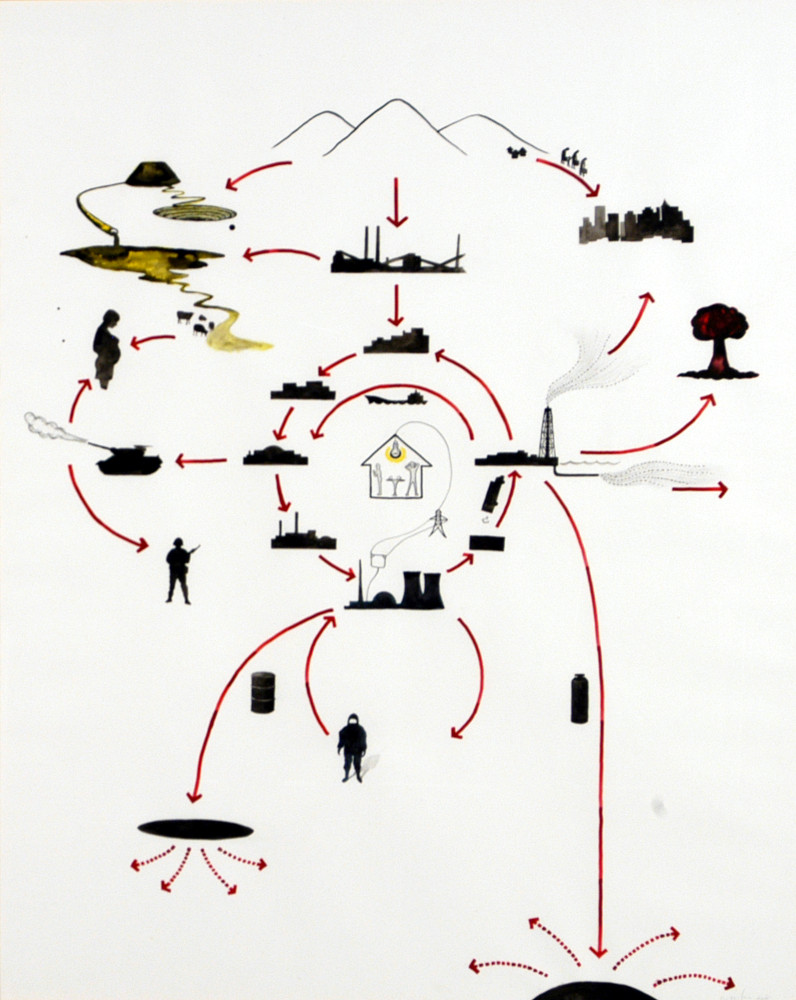
The Nuclear Fuel Cycle - Effect

This is where I used to graze my knees, pencil on paper, 2009
